Bienvenue à Bruxelles!
European capital, home to many artists, renowned for its waffles, gilding and history, I was very excited to discover the past and present history of the city of Brussels.
I arrived in the afternoon, and luckily I still had the time to visit the Comics museum. On my way there, I’ve encountered some of Brussel’s symbols in quite unexpected places!

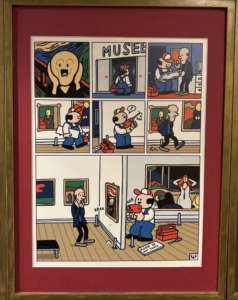
The next morning, I went to the Royal Museums of Fine arts of Belgium and the Magritte-museum. Their collection reflected that there is something very primitive about the act of painting: some artists follow strict rules, others try at all costs to break free from them. The essential thing, according to René Magritte, is to follow the flow of one’s ideas rather than that of traditions; to listen to one’s nature before seeking to understand it.
Magritte (1898-1967) was a Belgian surrealist artist known for playing with the perspective of reality. You may be familiar with Magritte’s paintings ‘This is not a pipe’, ‘The Son of Man’ or my favorite serie ‘The Human Condition’. If there is a recurring theme in these works, it is that Magritte breaks down the boundary between the object and its representation, between reason and imagination.
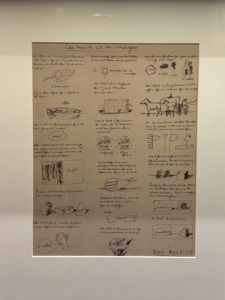
His approach aims to be as close as possible to the insensible, the Unknown. In this respect, his paintings take on particularly cold tones, but he also manages to turn shadow into light.
If Magritte’s art is quite difficult to analyse – as he wanted it to be – it is nevertheless possible to say that Magritte’s work has a lively character and opens the way to interpretation, as if his paintings retained, like the wings of the dove, a sense of freedom and a portion of the sky!
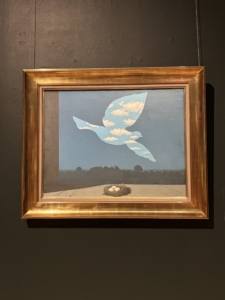
In the afternoon, I had the pleasure of meeting Paula and Florence, both heritage conservatory architects of the “Grand-Place” site, classified as a World Heritage site by UNESCO since 1998 for its architecture and significant history.
Built in the 12th century, bombed in 1695 and rebuilt several times, La Grand-Place bears witness to a rich architecture that is recognizable by the style of its buildings, which range from Gothic to Baroque. Beyond its history and the various political and popular functions to which the buildings have been used, it is the resilience and the point of honour to preserve its image as close as possible to the original architectural plans, as Paula and Florence have pointed out, that make La Grand-Place an exceptional place for its historical and cultural heritage.
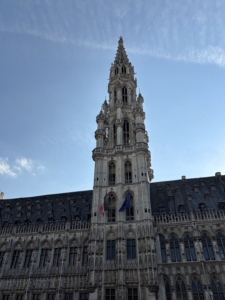
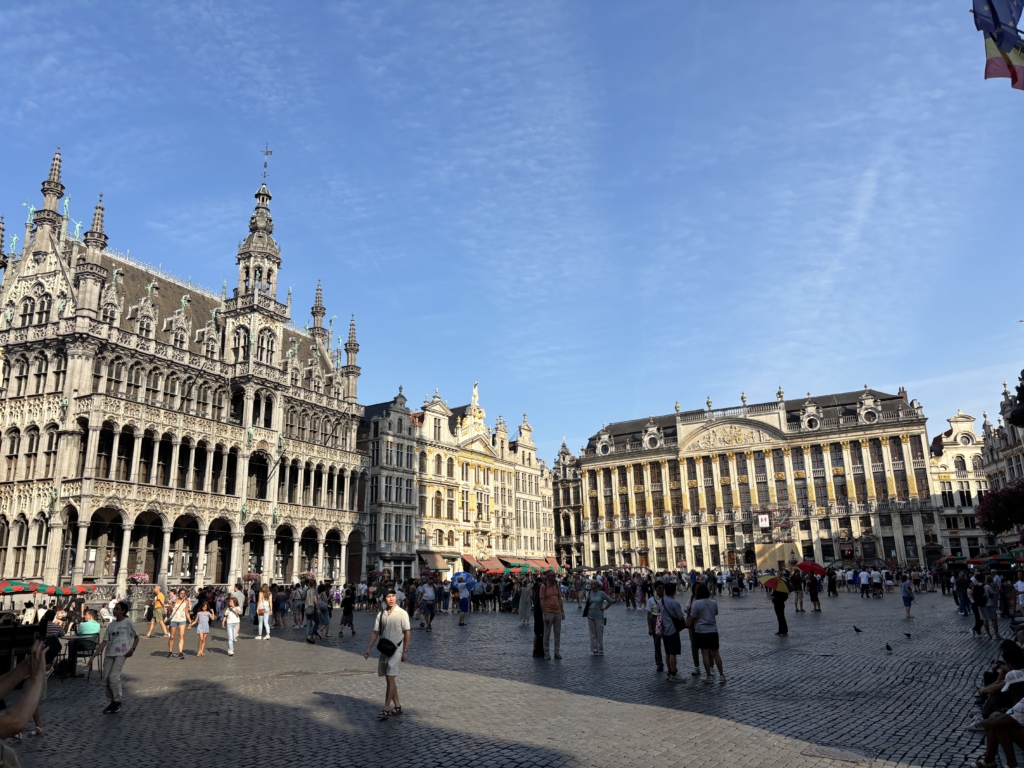
According a lot of attention to details and passion to their explanations, Paula and Florence showed me the known and unknown stories of Brussels, from the Maison du Roi to the rooftop of their workplace, via the City Hall and the Bourse.
Their architectural perspective was really interesting, particularly in terms of the conservation process, the different stages involved in renovating the buildings on the main square: from the largest stones to the smallest pieces and, finally, the gilding.
Here is a photo of us taken in front of the statue of Saint-Michael, patron saint of the City of Brussels, the copy of which decorates the city’s skyline!

If I learned one thing by walking through the sometimes narrow streets of this city and by travelling, with Paula and Florence, through the history and architecture of Brussels, it is that there are places where it is sometimes enough to let your gaze wander in the sky to discover other wonders that museums, parks and shops do not allow us to see every day!

Next stop is the City of Nuremberg in Germany. See you there, dear travel companions!


